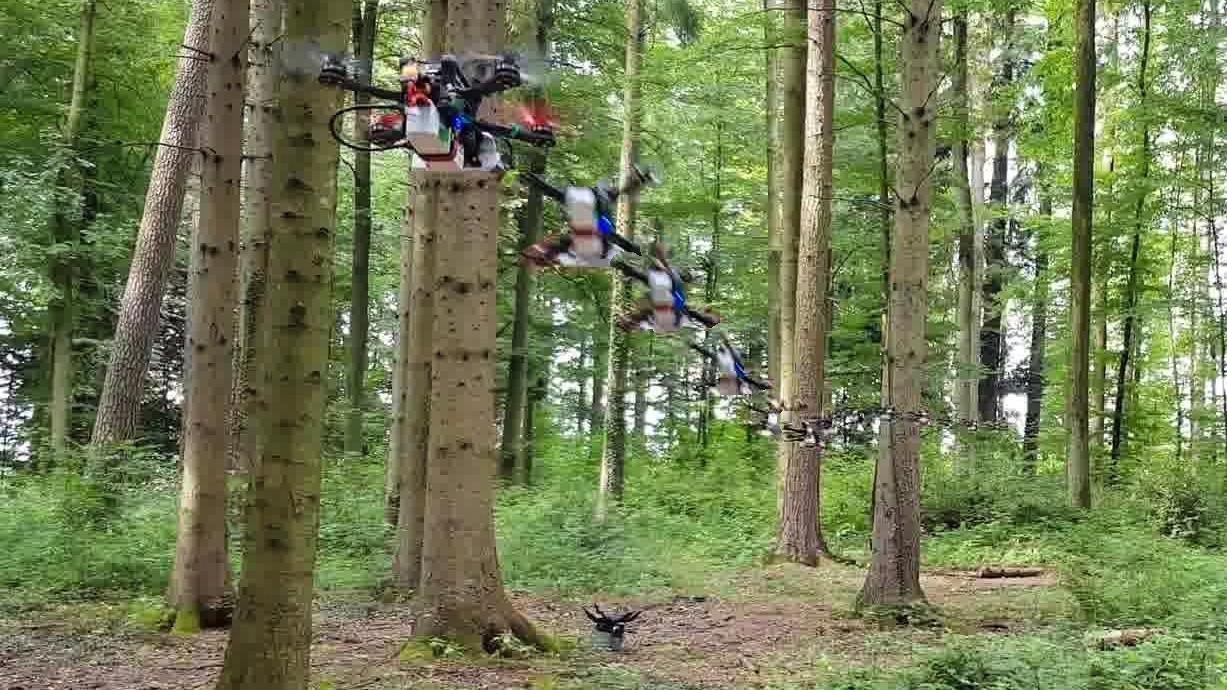A research team led by the University of Zurich has designed a new technique to autonomously fly quadrotors through unknown complex environments at high speed using onboard sensing and computation. The new method could be useful in an emergency situation, on construction sites or for security applications.
 The autonomous drone navigates independently through the forest at 40 km/h. Image Credit: University of Zurich
The autonomous drone navigates independently through the forest at 40 km/h. Image Credit: University of Zurich
Drones are an ideal choice for exploring complicated and unknown environments such as rainforests, buildings or caves. These machines are fast, agile and small and are capable of carrying sensors and payloads virtually anywhere. However, autonomous vehicles are not sufficiently programmed to traverse through the unknown environment without a map. Currently, human pilots are needed to operate the drones to their full potential.
To master autonomous agile flight, you need to understand the environment in a split second to fly the drone along collision-free paths. This is very difficult both for humans and for machines. Expert human pilots can reach this level after years of perseverance and training. But machines still struggle.
Davide Scaramuzza, Lead, Robotics and Perception Group, University of Zurich
The AI Algorithm Learns to Fly in the Real-World from a Simulated Expert
Scaramuzza and his team have trained an autonomous quadrotor, in this study, enabling it to fly through previously unobserved environments like forests, ruins, buildings and trains, maintaining a speed up to 40 km/h, without crashing into trees, walls or other obstacles. These features are achieved depending only on the onboard cameras and computation.
The neural network of the drone learned to fly by observing a kind of “simulated expert” — an algorithm that flew a computer-generated drone via a simulated environment comprising complex hindrances. Throughout the flight, the algorithm had complete information regarding the condition of the quadrotor and reading from its sensors and could depend on time and computational power to track the ideal trajectory.
It is not possible to use such a “simulated expert” outside the simulation. However, its data was employed to teach the neural network about prediction ideas to find the best trajectory. This is notably advantageous over the existing system, which initially uses sensor data to create a map of the environment and then plans trajectories within the map,
A couple of steps need time and make it impossible to fly at high speeds.
No Exact Replica of the Real-World Needed
After the simulation-oriented training, the system was set to test in a variety of real environments, where it was able to fly at a speed of 40 km/h.
While humans require years to train, the AI, leveraging high-performance simulators, can reach comparable navigation abilities much faster, basically overnight.
Antonio Loquercio, Study Co-Author and PhD Student, University of Zurich
“Interestingly these simulators do not need to be an exact replica of the real world. If using the right approach, even simplistic simulators are sufficient,” stated Elia Kaufmann, a PhD student, and co-author.
The researchers explain that the application is not limited to quadrotors, but can also be used to enhance the performance of autonomous cars. The approach can also be used in training the AI systems for operations in domains where data collection is challenging or impossible, for example, on other planets.
As reported by the researchers, the team will further enhance the drone with their experience, as well as work to develop faster sensors that are capable of providing more information about the environment in a smaller time span. This will enable the drone to fly safely, even at the speed of 40 km/h.
Journal Reference:
Loquercio, A., et al. (2021) Learning high-speed flight in the wild. Science Robotics. doi.org/ 10.1126/scirobotics.abg5810.